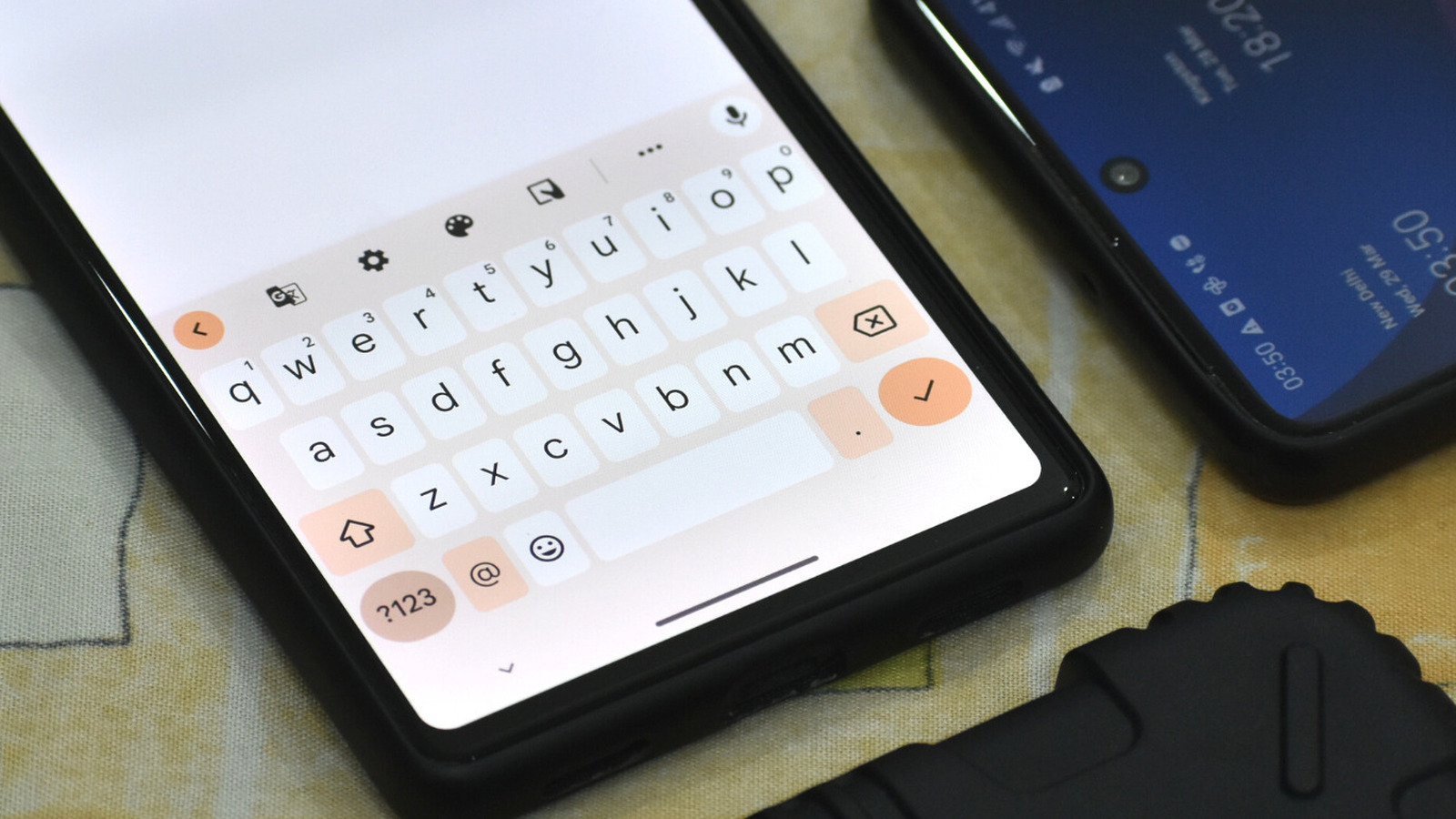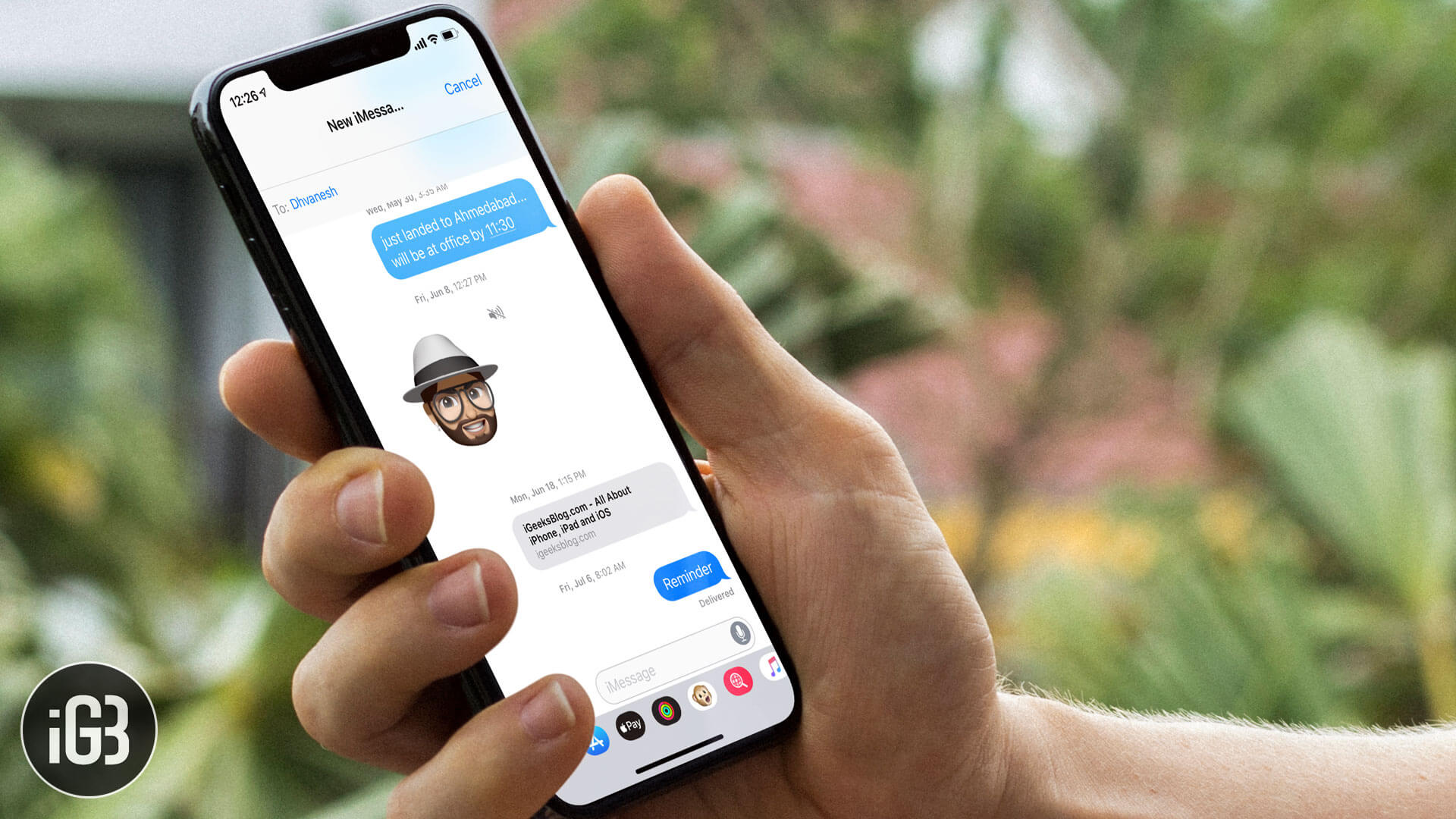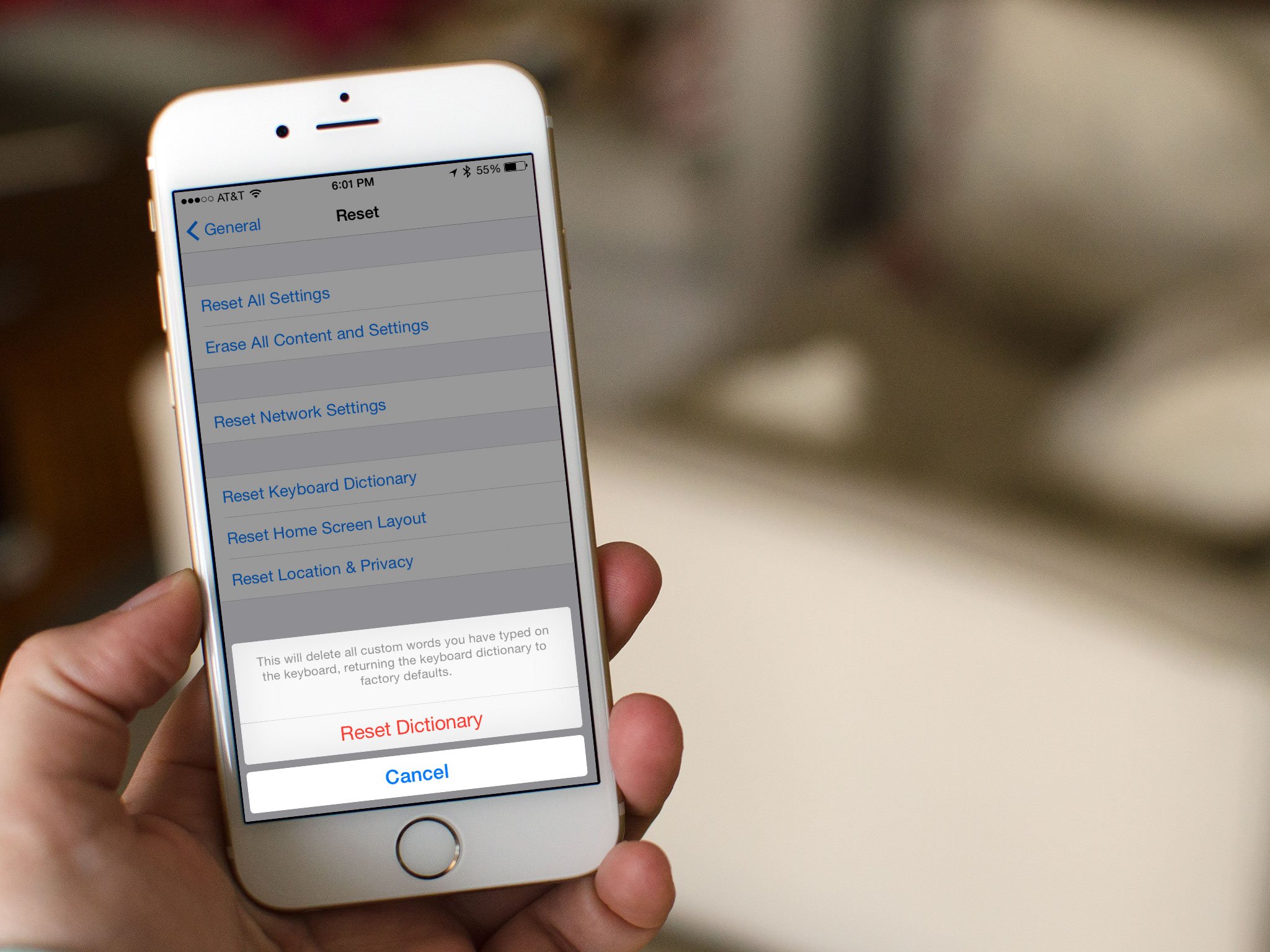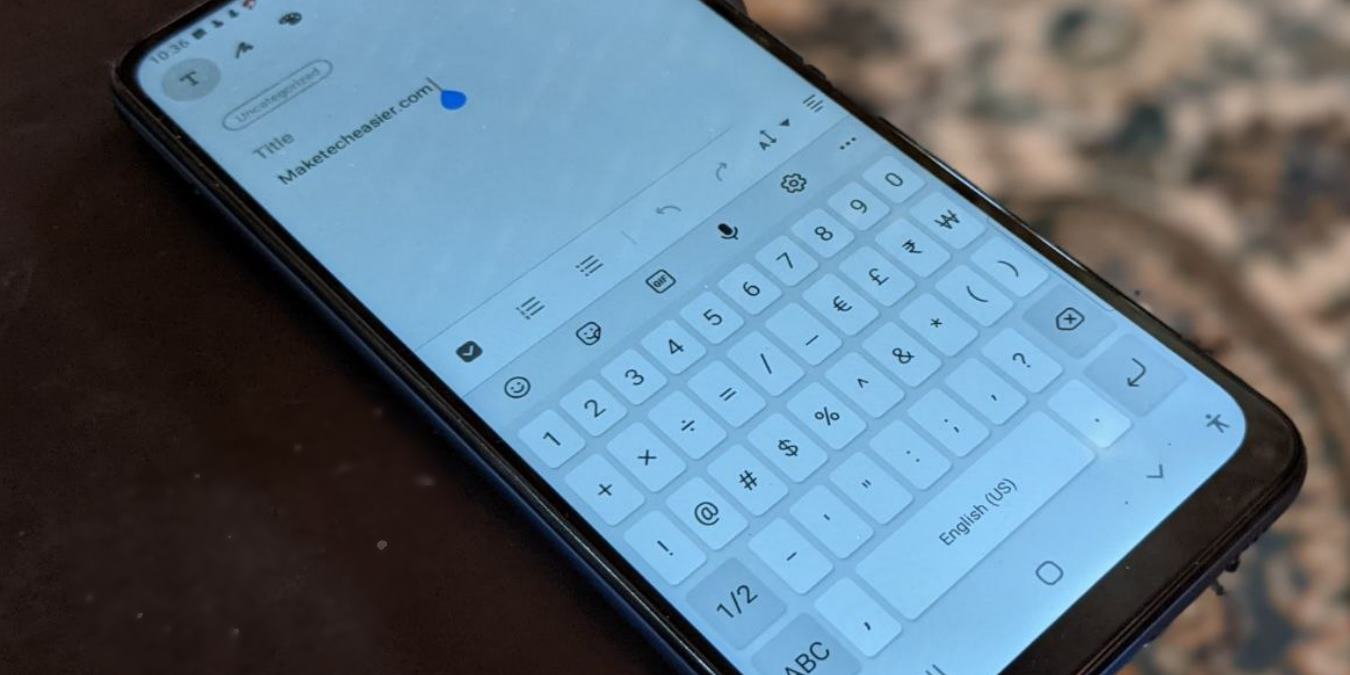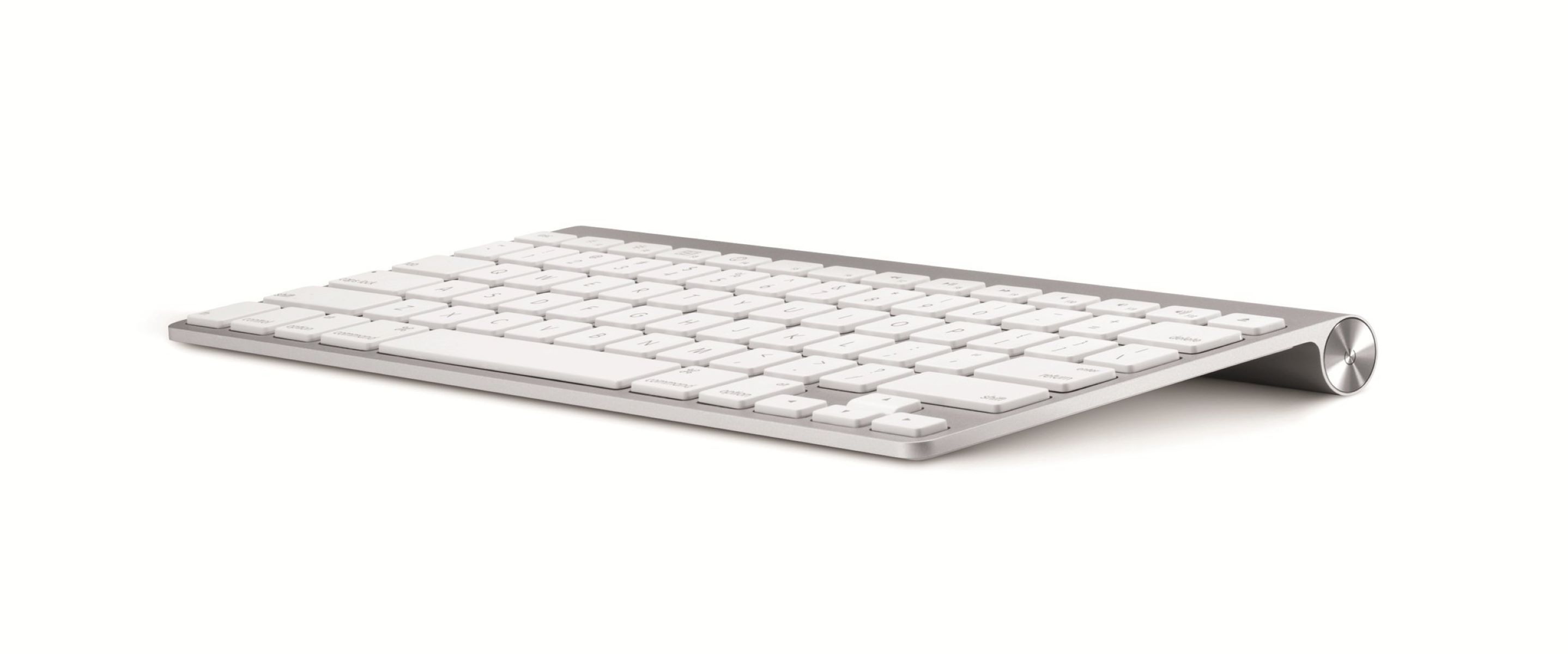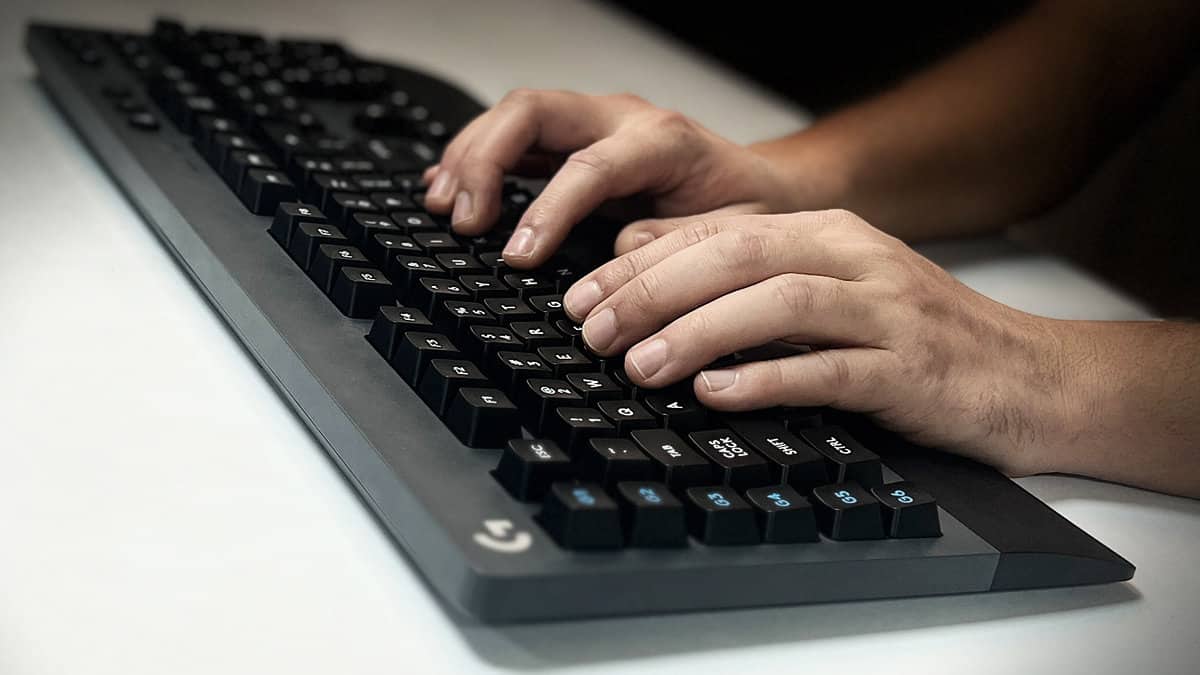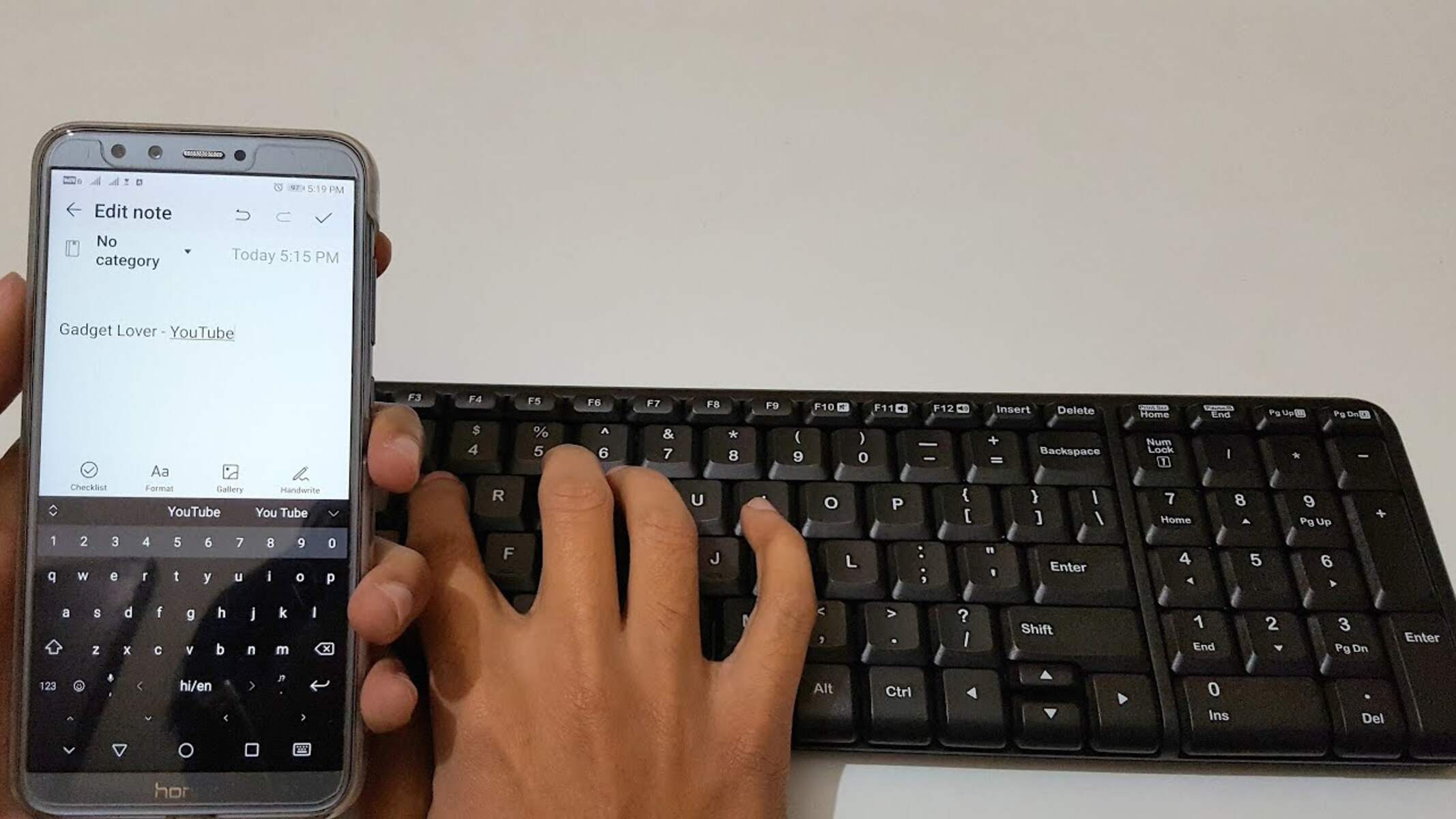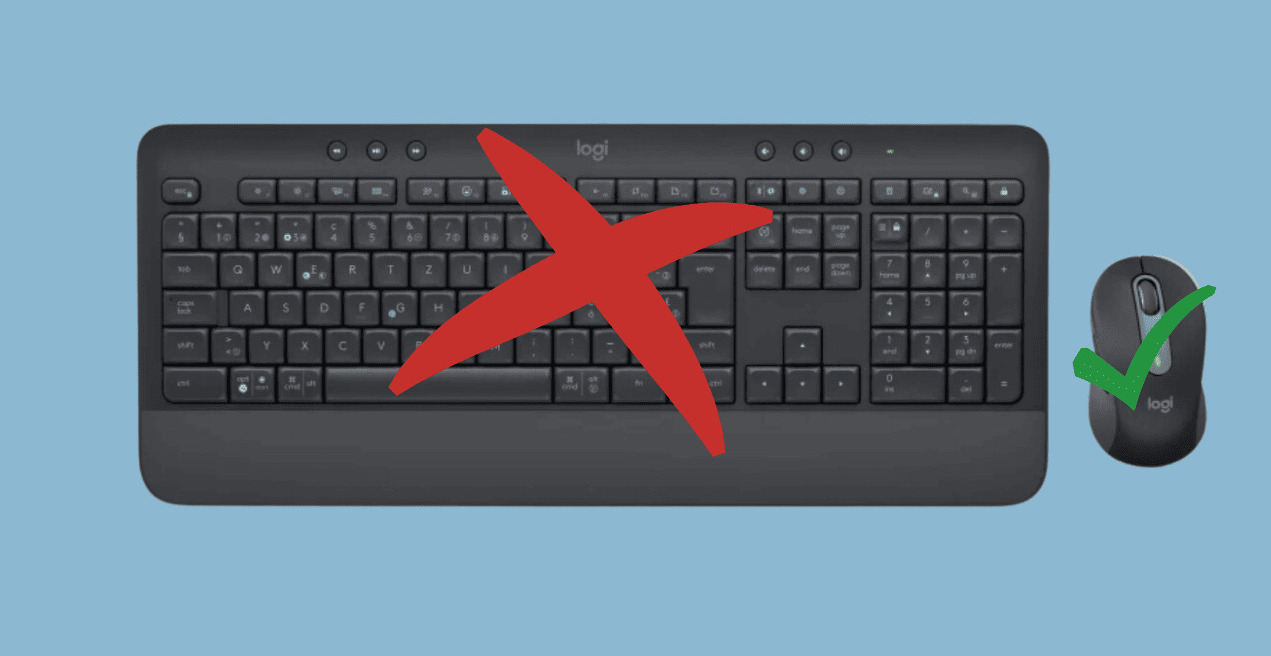Common Keyboard Issues on Phones
Having a functional keyboard on your phone is crucial for effective communication, whether it’s texting, emailing, or browsing the web. However, there are times when you may encounter issues with your phone’s keyboard that can hinder your productivity and frustrate you. Understanding and identifying these common keyboard issues can help you troubleshoot and resolve them swiftly.
One common issue is unresponsiveness. You may notice that your phone’s keyboard is not registering your taps or swipes, making it impossible to type properly. This can be caused by various factors, including software glitches, outdated system software, or even physical damage to the screen or hardware.
Another frustrating issue is autocorrect errors. Your phone’s keyboard may frequently change your intended words to incorrect or nonsensical substitutions. This can be caused by a lack of a personalized dictionary, outdated language settings, or autocorrect settings that are too aggressive.
Some users also experience lag or slow performance when using the keyboard on their phones. This can lead to delays between tapping a key and seeing the corresponding character appear on the screen. Factors such as a lack of system resources, running too many apps in the background, or a memory-intensive keyboard app can contribute to this problem.
Furthermore, incorrect key layout or missing keys can be a common issue. You may find that certain letters or symbols are missing or that the layout of your keyboard does not match your preferred language or typing style.
Lastly, accidental activation of the caps lock or other special function keys can cause frustration while typing. This can occur when you accidentally tap the key or when the keyboard app is not properly calibrated or designed.
Understanding these common keyboard issues will empower you to troubleshoot and resolve them effectively. In the following sections, we will provide you with a comprehensive troubleshooting guide to help you address these issues and restore your phone’s keyboard functionality.
Troubleshooting Guide for Keyboard Issues
When you encounter keyboard issues on your phone, it can be frustrating, but fear not! We’ve prepared a troubleshooting guide to help you resolve these problems and get your keyboard back to optimal functionality.
- Restart Your Phone: Sometimes, a simple restart can fix minor software glitches and refresh your phone’s system, including the keyboard app. Hold down the power button, select “Restart,” and see if the issue persists.
- Update Your Phone’s Software: Outdated software can potentially cause compatibility issues with your keyboard app. Go to your phone’s settings, navigate to “Software Update,” and check for any available updates. Install them if available.
- Clear Keyboard App Cache and Data: Clearing the cache and data of your keyboard app can help resolve issues related to corrupted data. Go to your phone’s settings, find “Apps” or “Application Manager,” locate your keyboard app, and clear the cache and data storage.
- Reset Keyboard Settings: Resetting your keyboard settings can revert any incorrect configurations that may be causing the issues. Go to your phone’s settings, navigate to “Language and Input,” select your keyboard app, and choose the “Reset Settings” option.
- Check Language and Input Settings: Ensure that the correct language and input settings are selected for your keyboard. Go to your phone’s settings, select “Language and Input,” choose your keyboard app, and make sure the desired language is selected.
- Disable and Re-enable Keyboard App: Disabling and then re-enabling the keyboard app can resolve software glitches. Go to your phone’s settings, navigate to “Apps” or “Application Manager,” locate your keyboard app, and disable it. After a few moments, enable it again.
- Install or Switch to a Different Keyboard App: If all else fails, consider installing a different keyboard app from the app store. Choose one with good reviews and ratings to ensure a smooth typing experience.
- Check for Physical Damage or Connectivity Issues: Inspect your phone’s screen and hardware for any physical damage that may be affecting the keyboard’s responsiveness. Additionally, ensure that your phone is not in a low signal or connectivity area.
- Contact Device Manufacturer or Support for Assistance: If none of the above steps work, reach out to your device manufacturer or phone support for further assistance. They may provide specific troubleshooting steps or suggest repair options.
By following these troubleshooting steps, you should be able to resolve most common keyboard issues on your phone. If the problem persists, it may be a hardware-related issue that requires professional assistance. Don’t hesitate to reach out to the experts for help.
Restart Your Phone
One of the simplest yet most effective troubleshooting steps for resolving common keyboard issues on your phone is to restart it. Restarting your phone can help refresh its system and clear any temporary software glitches that may be affecting the keyboard’s functionality.
To restart your phone, follow these steps:
- Press and hold the power button located on your phone.
- You will see a menu appear on your screen with various options.
- Select the “Restart” or “Reboot” option from the menu.
- Your phone will then restart, and the process may take a few moments.
Once your phone has restarted, navigate to the keyboard app and check if the issue persists. In many cases, a simple restart can solve minor software glitches that may have been causing unresponsiveness, lag, or other keyboard-related problems.
It’s worth noting that a restart can also help free up system resources that may be impacting the performance of your keyboard app. By closing background processes and clearing temporary files, restarting your phone can provide a fresh start and potentially resolve keyboard issues.
If, after restarting your phone, the keyboard problem is still present, continue troubleshooting using the other steps provided in this guide. Restarting is usually the first step because it is quick and easy to do, and it often resolves minor software-related issues.
Remember, when performing a restart, ensure that you save any important work or data before initiating the process. In some cases, a restart may cause your phone to close any open applications or clear unsaved data, so it’s important to be prepared.
If the keyboard issue persists even after restarting your phone, proceed to the next troubleshooting step to further address the problem.
Update Your Phone’s Software
Outdated software on your phone can often be a culprit behind various keyboard issues. When your phone’s software is not up to date, it may not be fully compatible with the keyboard app, leading to performance issues or unexpected behavior.
To check for and update your phone’s software, follow these steps:
- Go to your phone’s settings menu.
- Look for the “Software Update” or “System Update” option.
- Select it to check for any available updates.
- If an update is available, follow the prompts to download and install it.
- Depending on your phone’s settings, the update may require a Wi-Fi connection or sufficient battery life.
Updating your phone’s software not only provides bug fixes and new features but can also address compatibility issues that may be affecting the keyboard. Manufacturers regularly release updates to enhance device performance and address any reported issues, including keyboard-related problems.
It’s important to note that the steps to check for updates may slightly vary depending on your phone’s make and model. However, most modern smartphones have a dedicated section in the settings menu for software updates.
Once you have updated your phone’s software, restart your device and check if the keyboard issue has been resolved. In many cases, a software update can fix bugs or compatibility issues that may have been causing the keyboard to behave unexpectedly or malfunction.
If the keyboard problem persists even after updating your phone’s software, continue troubleshooting using the other steps outlined in this guide. Remember, keeping your phone’s software up to date not only helps resolve keyboard issues but also ensures that you have the latest security patches and feature improvements.
If you are still experiencing keyboard issues after updating your phone’s software, proceed to the next troubleshooting step to further address the problem.
Clear Keyboard App Cache and Data
If you’re experiencing keyboard issues on your phone, clearing the cache and data of the keyboard app can often fix the problem. Over time, the cache can accumulate temporary files and data that may cause the keyboard app to behave unexpectedly or become unresponsive.
Follow these steps to clear the cache and data of the keyboard app:
- Open the settings menu on your phone.
- Find and select “Apps” or “Application Manager.”
- Scroll through the list of installed apps and locate your keyboard app.
- Tap on the keyboard app to access its settings.
- Within the app settings, you’ll find options to clear the cache and data.
- Select “Clear Cache” to remove temporary files associated with the keyboard app.
- Next, choose “Clear Data” to delete any saved preferences or settings for the app.
Once you have cleared the cache and data of the keyboard app, restart your phone and check if the keyboard issue has been resolved. Clearing the cache and data can help eliminate any corrupted files or conflicting settings that may have been causing the problem.
After clearing the cache and data, you may need to reconfigure your keyboard app settings, such as selecting your preferred language, enabling autocorrect, or adjusting other personalized options. Take the time to go through the settings and customize them according to your preferences.
If the keyboard issue persists even after clearing the cache and data, continue troubleshooting using the other methods provided in this guide. Clearing the cache and data is a helpful step in resolving common keyboard issues, but there may be other underlying factors causing the problem.
Remember, clearing the cache and data of the keyboard app will not delete any of your personal data or information. It primarily removes temporary files and app settings specific to the keyboard app.
If you’re still experiencing keyboard issues after clearing the cache and data, proceed to the next troubleshooting step to further address the problem.
Reset Keyboard Settings
If you’re encountering persistent keyboard issues on your phone, resetting the keyboard settings can often help resolve the problem. This step will revert any incorrect configurations or personalized settings that might be causing the keyboard to malfunction.
Follow these steps to reset the keyboard settings on your phone:
- Open the settings menu on your phone.
- Navigate to the “Language and Input” section.
- Locate and select the keyboard app you are experiencing issues with.
- Within the keyboard settings, look for an option to “Reset Settings” or “Reset Keyboard.”
- Confirm the reset action and follow any additional prompts or instructions.
Resetting the keyboard settings will restore the default configuration and eliminate any customizations or adjustments you may have made. This can be helpful if you suspect that a specific setting or preference is causing the keyboard issues.
After resetting the keyboard settings, restart your phone and check if the keyboard issue has been resolved. The reset will remove any incorrect or conflicting configurations, allowing the keyboard app to function properly again.
Note that resetting the keyboard settings will not delete any of your personal data or files. It only resets the keyboard app’s settings to their default state.
If the keyboard problem persists even after resetting the settings, continue troubleshooting using the other methods explained in this guide. Resetting the settings is a valuable step in resolving common keyboard issues, but there may be additional factors contributing to the problem.
By following these steps, you can attempt to reset the keyboard settings and restore the functionality of your phone’s keyboard. If the issue persists, proceed to the next troubleshooting step for further solutions.
Check Language and Input Settings
If you’re facing keyboard issues on your phone, it’s important to ensure that the correct language and input settings are selected. Incorrect language settings can lead to unexpected behavior or errors in the keyboard app.
Follow these steps to check the language and input settings on your phone:
- Open the settings menu on your phone.
- Look for the “Language and Input” or “Language & Keyboard” section.
- Select it to access the language and input settings.
- Verify that the correct language is selected as your default input language.
- If multiple languages are enabled, ensure that the desired language for your keyboard is at the top of the list.
- If needed, remove any unnecessary or unwanted languages from the list.
Having the correct language selected ensures that your keyboard app recognizes and provides accurate suggestions for words and phrases in the language you intend to type in. It can also prevent autocorrect errors or substitutions in the wrong language.
Additionally, within the language and input settings, review the keyboard settings for any additional options or preferences that may be affecting the keyboard’s behavior. Depending on your phone model and keyboard app, you may find settings related to autocorrect, word prediction, swipe typing, or other input methods. Adjust these settings according to your preferences.
After verifying and adjusting the language and input settings, restart your phone and test the keyboard to see if the issue has been resolved.
If the keyboard problem persists even after checking and adjusting the language and input settings, continue troubleshooting using the other methods provided in this guide. Incorrect language settings may not always be the root cause of the issue, so it’s important to explore other potential solutions.
By ensuring that the correct language and input settings are selected, you can eliminate any language-related issues and optimize the performance of your phone’s keyboard.
Disable and Re-enable Keyboard App
Disabling and re-enabling the keyboard app on your phone is another troubleshooting step that can help resolve keyboard-related issues. This process can refresh the app and potentially fix any software glitches or conflicts that may be affecting its performance.
Follow these steps to disable and re-enable the keyboard app:
- Open the settings menu on your phone.
- Go to the “Apps” or “Application Manager” section.
- Scroll through the list of installed apps and locate your keyboard app.
- Tap on the keyboard app to access its settings.
- Within the app settings, you’ll find an option to “Disable” or “Turn off” the app.
- Confirm the disable action, and the keyboard app will be disabled.
- Wait a few moments, then go back to the app settings and re-enable the keyboard app.
Disabling and re-enabling the keyboard app essentially restarts it, allowing it to reload and reset any temporary files or conflicting settings that may have been causing the issue.
After re-enabling the keyboard app, restart your phone and check if the keyboard problem has been resolved. The disable and re-enable process can help eliminate any software glitches or conflicts that may have been affecting the keyboard’s functionality.
If the keyboard issue persists even after disabling and re-enabling the app, continue troubleshooting using the other methods provided in this guide. Disabling and re-enabling is a helpful step, but it may not always resolve more complex issues.
Remember, disabling the keyboard app will prevent you from using it for typing until it is re-enabled. If you need to use your phone’s keyboard during this process, consider installing an alternative keyboard app from the app store to use temporarily.
By following these steps, you can attempt to disable and re-enable the keyboard app to resolve common issues. If the problem persists, proceed to the next troubleshooting step for further solutions.
Install or Switch to a Different Keyboard App
If you have tried various troubleshooting steps and the keyboard issues persist on your phone, it may be worth considering installing or switching to a different keyboard app. An alternative keyboard app can provide a fresh start and potentially resolve the problems you are experiencing.
Follow these steps to install or switch to a different keyboard app:
- Open the app store on your phone (e.g., Google Play Store for Android, App Store for iOS).
- Search for “keyboard” or browse through the available keyboard apps.
- Select a keyboard app that has good reviews and ratings to ensure a reliable and user-friendly experience.
- Tap the “Install” or “Get” button to download and install the new keyboard app on your phone.
- Once the installation is complete, go to your phone’s settings, navigate to the “Language and Input” section, and select the newly installed keyboard app as your default input method.
By installing or switching to a different keyboard app, you can potentially overcome any persistent issues with the previous keyboard app. Different keyboard apps offer various features, customization options, and layouts, allowing you to find one that suits your preferences and typing style.
After setting up the new keyboard app, restart your phone and test the keyboard to see if the issues have been resolved. In many cases, a new keyboard app can provide a fresh and improved typing experience.
Remember, it’s a good idea to explore the settings of the new keyboard app to personalize it according to your preferences. Adjust options such as autocorrect, key layout, theme, and additional features to enhance your typing experience.
If the new keyboard app solves the problems you were experiencing, continue using it as your default keyboard. However, if the issue persists or you encounter new issues, you may need to explore further troubleshooting steps or contact the app developer for assistance.
By installing or switching to a different keyboard app, you can explore new options and potentially overcome persistent keyboard issues on your phone.
Check for Physical Damage or Connectivity Issues
If you’re experiencing persistent keyboard issues on your phone, it’s important to consider the possibility of physical damage or connectivity issues. Physical damage or poor connectivity can impact the responsiveness and functionality of your phone’s keyboard.
Here are some steps to check for physical damage or connectivity issues:
- Inspect your phone’s screen for any visible cracks, scratches, or damage. Even minor damage can affect touch sensitivity and responsiveness.
- If you’re using a phone case or screen protector, remove it temporarily and test the keyboard to see if the issue is resolved. Poorly fitted or damaged accessories may interfere with the proper functioning of the touchscreen.
- Check for any liquid damage. If your phone has been exposed to water or other liquids, it can affect the internal components, including the touchscreen and keyboard.
- Ensure that your phone is not in a low signal or connectivity area. Weak signals or unstable connections can cause delays or unresponsiveness in the keyboard.
- Try using the keyboard in different environments to see if the issue persists. Sometimes, certain locations or conditions may interfere with the touchscreen’s performance.
- If possible, test the keyboard on a different device. This can help determine if the issue is specific to your phone or if it’s a problem with the keyboard app itself.
If you notice any physical damage or suspect liquid damage, consider taking your phone to a certified repair center for assessment and possible repairs. They can evaluate the extent of the damage and provide appropriate solutions.
If the keyboard issue is related to poor connectivity, try moving to an area with a stronger signal or connect to a different Wi-Fi network if applicable.
By checking for physical damage or connectivity issues, you can identify potential external factors contributing to the keyboard problems. If you determine that these factors are causing the issue, take appropriate actions to address them.
Contact Device Manufacturer or Support for Assistance
If you have tried various troubleshooting steps outlined in this guide and the keyboard issues persist on your phone, it may be time to seek further assistance from the device manufacturer or customer support. They have the expertise and resources to address complex issues and provide specific guidance for your particular device.
Here are the steps to contact your device manufacturer or support for assistance:
- Look for the manufacturer’s website or customer support contact information. This can typically be found in the documentation that came with your phone or by conducting an online search.
- Visit the manufacturer’s website and navigate to the support or contact section.
- Find the appropriate contact method, such as phone, email, or live chat.
- Explain the keyboard issues you’re experiencing and the troubleshooting steps you’ve already taken.
- Provide any relevant information about your phone, such as the make, model, and software version.
- Follow any instructions or recommendations provided by the manufacturer or support team.
The manufacturer’s support team will be able to provide you with specific troubleshooting steps tailored to your device and software configuration. In some cases, they may request additional information or guide you through advanced troubleshooting procedures.
If your phone is still under warranty, the manufacturer may offer repair or replacement options if the keyboard issues are determined to be hardware-related. Be prepared to provide proof of purchase or warranty information if requested.
If your device is not under warranty, the manufacturer’s support team may still be able to provide guidance or suggest reputable repair services that can help resolve the keyboard issues.
Remember to be patient and provide as much detailed information as possible when contacting the manufacturer or support team. Clear and accurate communication will help them understand the nature of the problem and provide appropriate assistance.
By reaching out to the device manufacturer or support team, you can tap into their expertise and resources to address the persistent keyboard issues on your phone. They can guide you through further troubleshooting steps or recommend repair options if necessary.
Conclusion
A functional keyboard is essential for effective communication on your phone. When faced with keyboard issues, it’s important to follow a systematic troubleshooting process to identify and resolve the root cause of the problem. By implementing the steps outlined in this guide, you can address common keyboard issues and restore optimal functionality to your phone’s keyboard.
From restarting your phone and updating its software to clearing the keyboard app’s cache and data, resetting keyboard settings, and checking language and input configurations, each step provides a valuable opportunity to troubleshoot and fix the issue.
If these steps do not resolve the problem, consider disabling and re-enabling the keyboard app, installing or switching to a different keyboard app, checking for physical damage or connectivity issues, and seeking assistance from the device manufacturer or support team.
Remember, keyboard issues can arise due to a variety of factors, such as software glitches, outdated software, incorrect settings, physical damage, or connectivity problems. By systematically exploring each possibility, you can increase the chances of resolving the issue and enjoying a smooth and reliable typing experience on your phone.
In some cases, the resolution may involve a combination of these troubleshooting steps or require professional assistance. It’s important to exercise patience, as resolving complex issues may take time and further investigation.
Ultimately, by being proactive in troubleshooting and seeking appropriate assistance when needed, you can overcome keyboard issues on your phone and ensure that your typing experience remains efficient and hassle-free.







